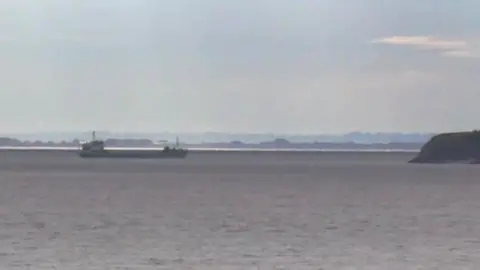Hinkley Point nuclear plant may stop south Wales mud dumping
 BBC
BBCMud dredged as part of Hinkley Point C nuclear plant construction could start being dumped off Somerset instead of south Wales.
Developer EDF Energy is considering two sites in the Bristol Channel.
They include Cardiff Grounds, where sediment dumping in 2018 provoked extensive protests over concerns the mud was contaminated by nuclear waste.
But a private disposal site off Portishead, on the England side of the channel, is also under consideration.
A public outcry over the original mud dumping led to protests and petitions attracting hundreds of thousands of signatures online, a full Senedd debate and an acknowledgment by both the developers and Natural Resources Wales that better communication with the public was needed over the plans.

The firm says a decision on which to go for will be made at a later date and will be "driven by regulatory approval and project schedule".
They had previously described Cardiff Grounds - a couple of miles out to sea from the Welsh capital - as the only suitable location for the amount of sediment they had to move.
It is now understood there may be enough space at the Portishead site, although it has the disadvantage of being further away from Hinkley.
The maximum volume of mud dumped would be 469,000m3, compared to a previous estimate of 600,000m3.
Campaigners had raised fears the mud could be contaminated by discharges of nuclear waste from the old Hinkley A and B reactors.
The claims were dismissed by EDF, Natural Resources Wales and Welsh Government, who all insisted the work posed no threat to human health or the environment and the sediment was typical of that found elsewhere in the Bristol Channel.
EDF said it plans to resume mud dredging this year as part of works to install the new power plant's huge water cooling system.
It is now making applications both to Natural Resources Wales with regards to the potential for dumping at Cardiff Grounds and England's Marine Management Organisation for the Portishead site.
It said the applications will include a full Environmental Impact Assessment, public consultation and a testing plan that "goes above and beyond internationally recognised best practice, with more samples at greater depth and with a greater range of analysis".
